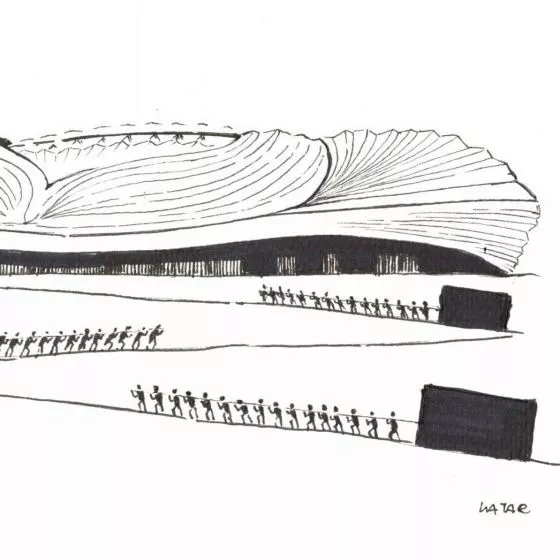Architects at {tag:pracownie} are increasingly designing in rural areas that are slowly being absorbed by growing cities. This is also the case with the design of the suburban villas. The houses, which have a traditional form and refer to the local development of Tyniec, were created as a response to the expanding borders of Krakow.
Not without significance for the design of the houses was the local plan limiting development. Only single-family development is allowed in the area, so the architects proposed two, two-family houses of traditional form and elevation. This procedure made it possible to obtain four apartments. The plot has a slight slope, so each of the buildings has a different foundation level. This had a positive effect on fitting the buildings into the existing context.
The surrounding architecture at the time of design is rural, with traditional roof and facade forms, while the investors' requirements are already at the level of a suburban villa. We tried to meet expectations, but design in accordance with the existing environment," the architects add.
The buildings are located in Tyniec
© VIBES architects
The blocks have been shaped to give their owners as much privacy and a sense of living in a separate single-family home as possible. The living areas of the apartments were moved away from each other, the projections were mirrored - in this way (thanks to the good location of the plot in relation to the world sides) each apartment received a sunny terrace and plenty of privacy. The apartments are connected only by the entrance area at the first floor level.
The architects created the duplex houses
© VIBES architects
Dobrawa Bies: What was your priority in this project? What was the inspiration behind it?
VIBES architects: We tried to give the buildings an individual character, but in order to increase the economic aspect of the investment, the elevations and projections are repetitive. On the other hand, their variety lies in the use of mirror reflections and offsets of projections and masses. The inspiration was the environment, and the priority was spatial order and fitting into the context of the place. Not contrast, but harmony with the surroundings.
Dobrawa: What posed the greatest design difficulty, and what are you most satisfied with?
VIBES architects: The design difficulty was the conditions of the Local Development Plan and the placement of as many units as possible on a relatively small plot of land in an attractive way. We are most satisfied with the fact that the above challenge was achieved in a natural way, blending in with the surroundings and giving a friendly space for living and recreation.
Dobrawa: What do you think the phenomenon of the barn house is based on?
VIBES architects: The simple form of the barn is a response to the fatigue with the previously popular architecture of single-family houses with complicated roofs and lots of dormers. The form of the barn house is a primordial shape that makes us think of HOME. A preschooler asked to draw a house will almost always draw a barn house - a square covered by a triangle. It is also the fashion for energy-efficient houses, which are associated by investors with a very simple building and roof. The popularity of the barn house is also influenced by the widespread use of technology that makes it possible to uncover the facade (no protruding eaves) and hide the guttering. Such a house allows for a modern linear arrangement of functional zones, and at the same time gives a lot of variety. The barn floor plans very easily divide into living and night zones (top down or front back). Properly divided into main zones, the object will easily shape a modern habitat. And what do we all dream of if not an escape to the countryside mixed with a little luxury?
Dobrawa: Thank you for the interview.














































